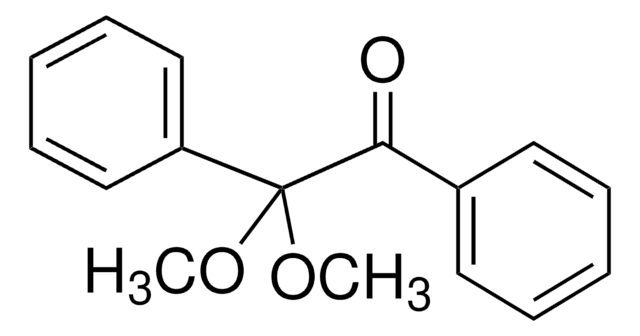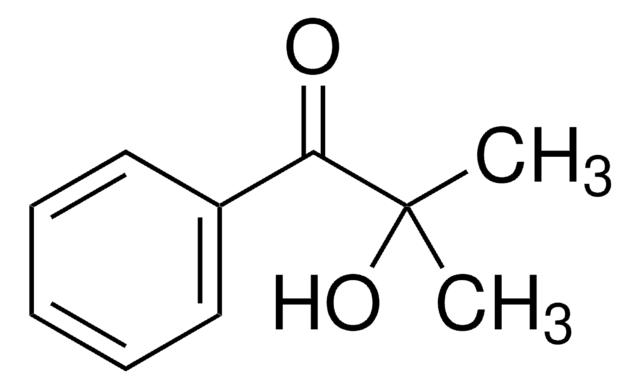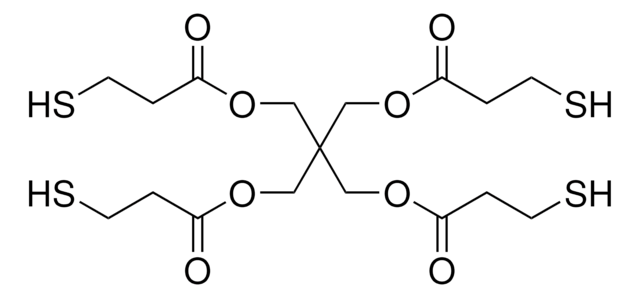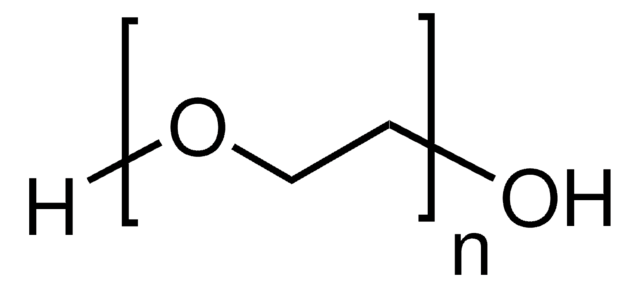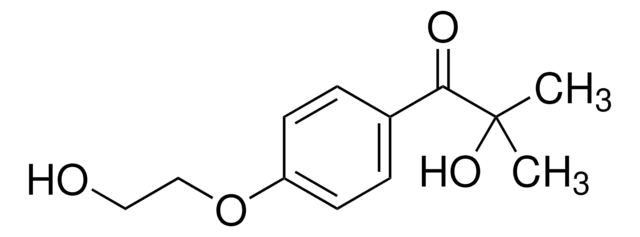推荐产品
描述
mesophase behaviour: Cr86N116I
质量水平
方案
≥95%
表单
solid
环保替代产品特性
Waste Prevention
Design for Energy Efficiency
Learn more about the Principles of Green Chemistry.
sustainability
Greener Alternative Product
颜色
white
环保替代产品分类
, Enabling
SMILES字符串
O(CCCCCCOC(=O)C=C)c1ccc(cc1)C(=O)Oc2c(cc(cc2)OC(=O)c3ccc(cc3)OCCCCCCOC(=O)C=C)C
InChI
1S/C39H44O10/c1-4-36(40)46-26-12-8-6-10-24-44-32-18-14-30(15-19-32)38(42)48-34-22-23-35(29(3)28-34)49-39(43)31-16-20-33(21-17-31)45-25-11-7-9-13-27-47-37(41)5-2/h4-5,14-23,28H,1-2,6-13,24-27H2,3H3
InChI key
FQCKIWWAEIOPSD-UHFFFAOYSA-N
相关类别
一般描述
We are committed to bringing you Greener Alternative Products, which adhere to one or more of The 12 Principles of Greener Chemistry. This product belongs to enabling category of greener alternatives and has been enhanced for energy efficiency. 4D printing basically produces zero waste. It holds the promise in the fight against climate change and manufacturing waste. Click here for more information.
应用
1,4-Bis[4-(6-acryloyloxyhexyloxy)benzoyloxy]-2-methylbenzene (RM82) is a known precursor for liquid crystal elastomer (LCEs) inks that can be direct-write printed into 3D structures capable of reversible changes in shape, i.e., four-dimensional-printed (4DP) structures . LCE actuators (LCEAs) using RM82 showed both thermal , photo and chemical responsiveness, which may enable new generations of soft robotics , implantable medical devices and dynamic functional arquitecture, such as photoswitches . RM82 has also been used to create the mesogenic order in liquid crystalline vitrimers, allowing postpolymerization processing, while also minimizing unwanted creep during actuation.
This product can be used in Material Jetting or Vat polymerization 3D printing techniques.
警示用语:
Warning
危险声明
危险分类
Skin Sens. 1
储存分类代码
13 - Non Combustible Solids
WGK
WGK 1
闪点(°F)
Not applicable
闪点(°C)
Not applicable
法规信息
新产品
Alexander Ryabchun et al.
Journal of the American Chemical Society, 141(3), 1196-1200 (2019-01-10)
Interfacing molecular photoswitches with liquid crystal polymers enables the amplification of their nanoscale motion into macroscopic shape transformations. Typically, the mechanism responsible for actuation involves light-induced molecular disorder. Here, we demonstrate that bistable hydrazones can drive (chiral) shape transformations in
Anne Helene Gelebart et al.
Nature, 546(7660), 632-636 (2017-06-29)
Oscillating materials that adapt their shapes in response to external stimuli are of interest for emerging applications in medicine and robotics. For example, liquid-crystal networks can be programmed to undergo stimulus-induced deformations in various geometries, including in response to light.
Shape changes in chemoresponsive liquid crystal elastomers.
Boothby J, et al.
Sensors and Actuators B, Chemical, 240, 511-518 (2017)
Cedric P Ambulo et al.
ACS applied materials & interfaces, 9(42), 37332-37339 (2017-10-03)
Three-dimensional structures capable of reversible changes in shape, i.e., four-dimensional-printed structures, may enable new generations of soft robotics, implantable medical devices, and consumer products. Here, thermally responsive liquid crystal elastomers (LCEs) are direct-write printed into 3D structures with a controlled
María López-Valdeolivas et al.
Macromolecular rapid communications, 39(5) (2017-12-07)
Soft matter elements undergoing programed, reversible shape change can contribute to fundamental advance in areas such as optics, medicine, microfluidics, and robotics. Crosslinked liquid crystalline polymers have demonstrated huge potential to implement soft responsive elements; however, the complexity and size
我们的科学家团队拥有各种研究领域经验,包括生命科学、材料科学、化学合成、色谱、分析及许多其他领域.
联系技术服务部门![1,4-Bis[4-(3-acryloyloxypropyloxy) benzoyloxy]-2-methylbenzene ≥97%](/deepweb/assets/sigmaaldrich/product/structures/380/149/2ffc4f5a-48c2-4bd1-9160-dfee808e5133/640/2ffc4f5a-48c2-4bd1-9160-dfee808e5133.png)
![1,4-Bis[4-(11-acryloyloxyundecyloxy)benzoyloxy]-2-methylbenzene](/deepweb/assets/sigmaaldrich/product/structures/215/829/62728d6f-7668-4693-94e2-37abc69d1144/640/62728d6f-7668-4693-94e2-37abc69d1144.png)

